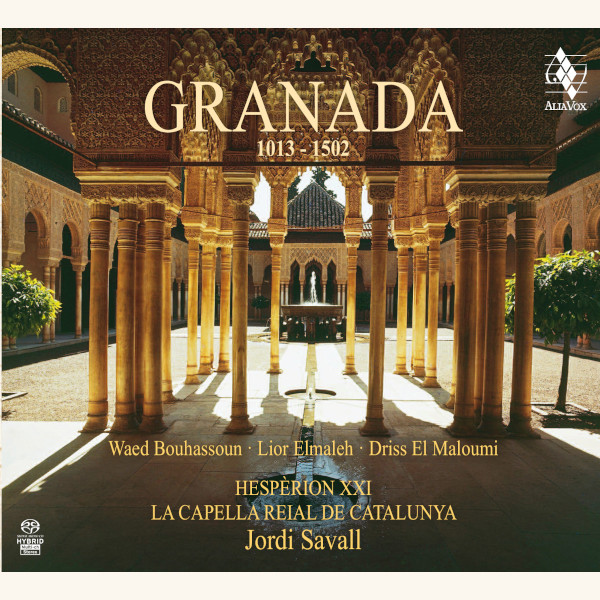GRANADA
(1013-1502)
Hespèrion XXI, Jordi Savall, La Capella Reial de Catalunya
17,99€
Reference: AVSA9915
- LE CONCERT DES NATIONS
- HESPÈRION XXI
- Jordi Savall
This historical and musical evocation of five centuries in the life of one of the most important and admired cities in Muslim Andalusia takes as its inspiration and starting-point the founding in 1013 of the kingdom of Granada by Zawi ibn Zirid on the ancient site of Garnata al-Yahud, or “Granada of the Jews”. Specially commissioned by the Granada Festival of Music and Dance, this programme was conceived and created to celebrate the millenary of the founding of the Kingdom of Granada. Most of the music on this CD was performed and recorded live during the concert given on 1st July 2013 at the Palace of Charles V in the Alhambra.
From the founding of the Kingdom of Granada, and the expansion and splendour of Al-Andalus,
to its incorporation in the Kingdom of Castile and Leon,
and the forced conversion of the Muslims.
This historical and musical evocation of five centuries in the life of one of the most important and admired cities in Muslim Andalusia takes as its inspiration and starting-point the founding in 1013 of the kingdom of Granada by Zawi ibn Zirid on the ancient site of Garnata al-Yahud, or “Granada of the Jews”. Specially commissioned by the Granada Festival of Music and Dance, this programme was conceived and created to celebrate the millenary of the founding of the Kingdom of Granada. Most of the music on this CD was performed and recorded live during the concert given on 1st July 2013 at the Palace of Charles V in the Alhambra.
+ information in the CD booklet
JORDI SAVALL
Bellaterra, 3 April 2016
Translated by Jacqueline Minett







Share